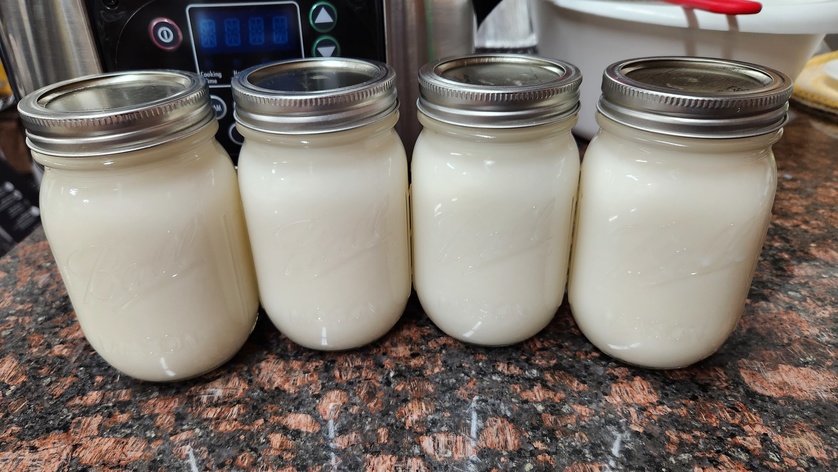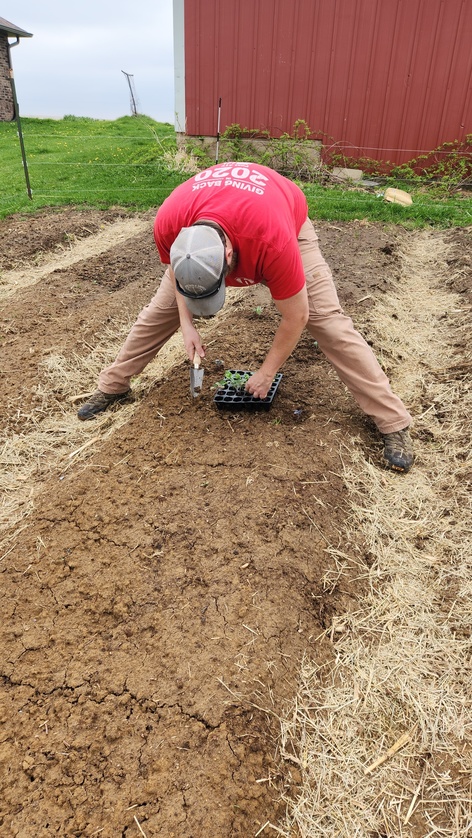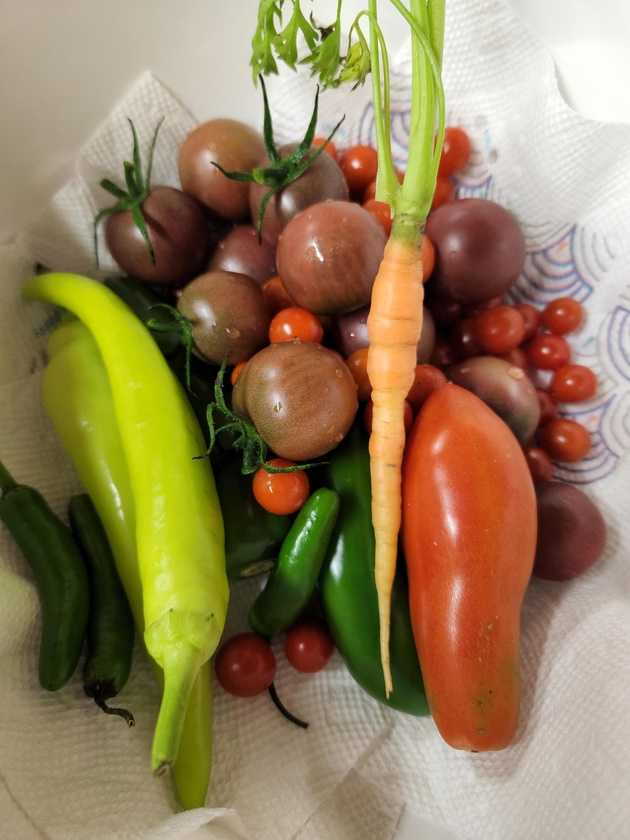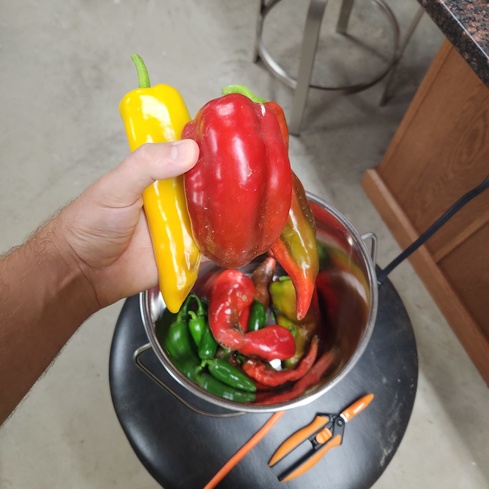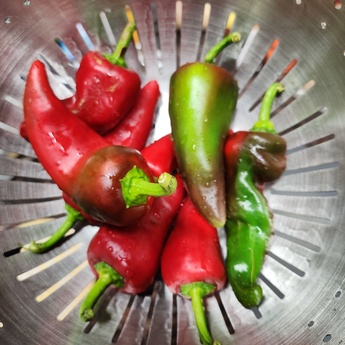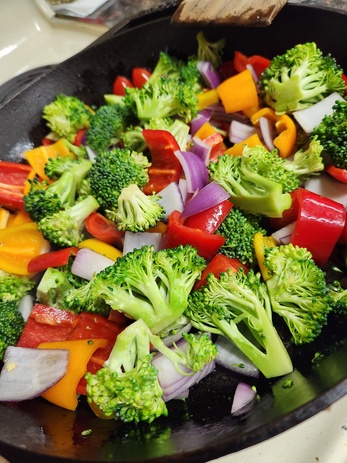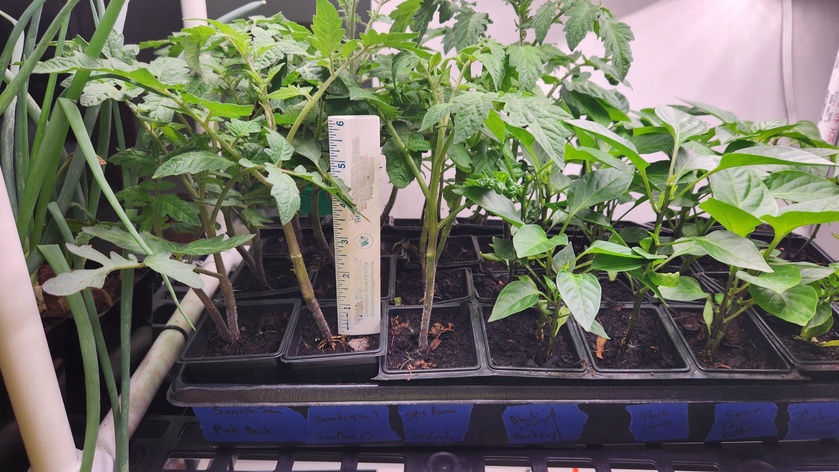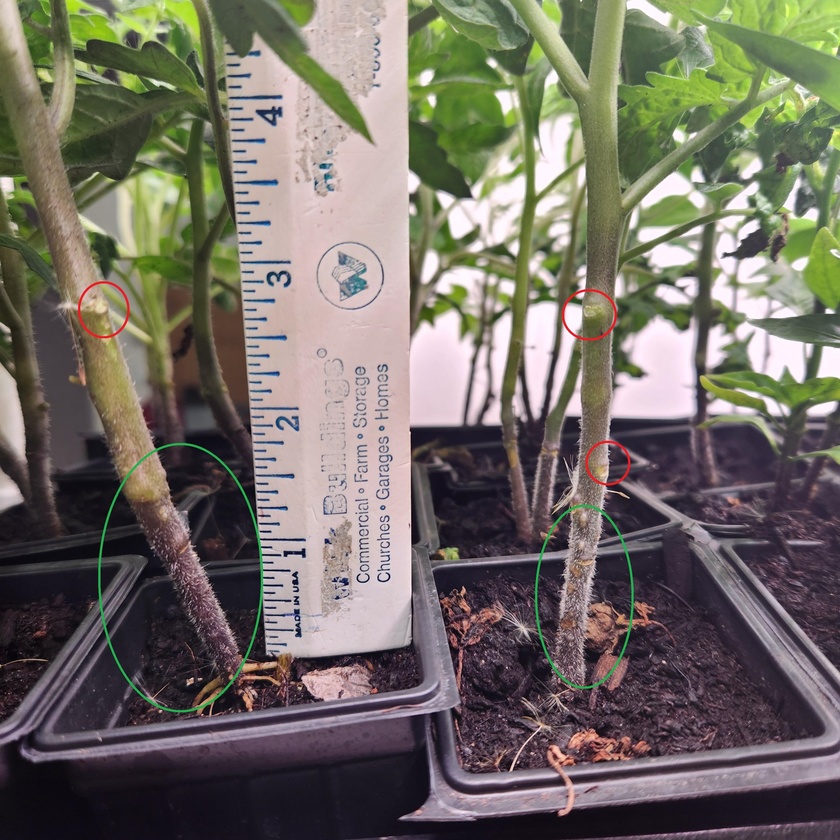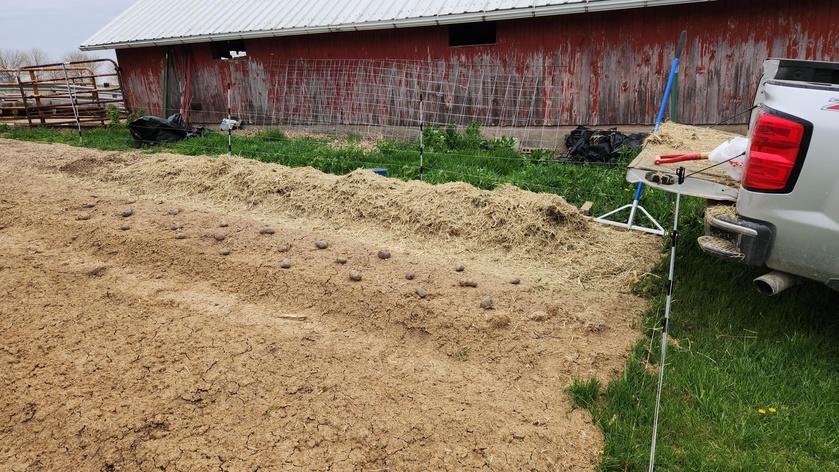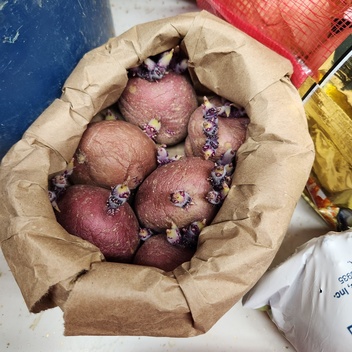If you’re ready to end your dependence on seed oils you’ve come to the right place. Rendering fat at home is a simple process that can be done without specialty tools. I render both beef and pork fats (tallow and lard) at home to use in place of vegetable oil. Check out this beginners guide to rendering fats at home:
Buy raw fat from your local grocery store or butcher. I purchase my fats from a local butcher in bulk. A 5 lb pack costs around $10 and will yield about half a gallon of finished product. I recommend keeping this frozen until you’re ready to use it.
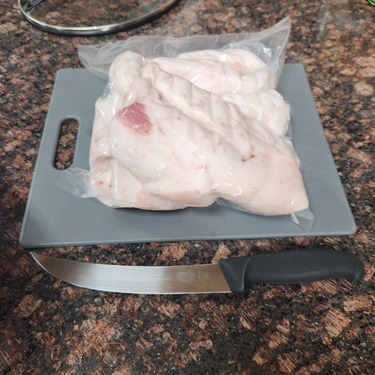
- Slice and dice! I partially thaw my fat and then use a large knife to shave small pieces off the still firm block. By reducing the size of the pieces you’ll speed up the process of melting down. Note: Fat has a low melting temp and even the heat from your hands will tend to turn a frozen block of fat into a slippery blob. Work quickly, wear gloves to keep things clean, and don’t stab yourself.
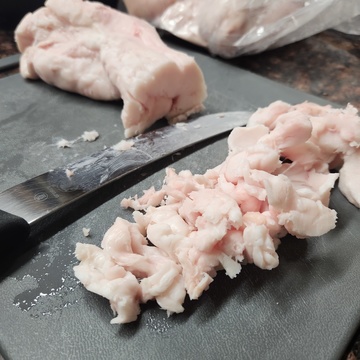
Cook your trimmings. I use a crockpot on low heat. Low and slow is the name of the game. It’s helpful to add a small amount of water (¼ cup) to the bottom when you first begin rendering the fat. This will help prevent scorching early on.
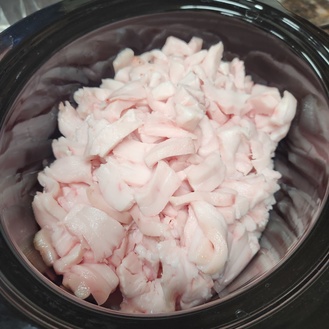
Stir and wait. Within a few hours you’ll begin to see the fat liquify. The key at this point is to monitor for any bits that are browning and scoop them out. Browning will cause your finished product to have a stronger flavor. Note: Stirring at this stage can cause the fat to boil rapidly.
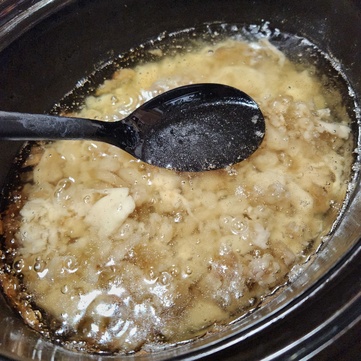
Notice the water boiling off and browning along bottom left edge. Strain the remnants. When the majority of your fat has melted into a clear yellow liquid you’re getting close (a full crockpot usually takes 10-12 hrs for me). You can begin straining the solids from your fat. I use a wire strainer first then add a coffee filter or cheesecloth to remove any remaining fine particles.
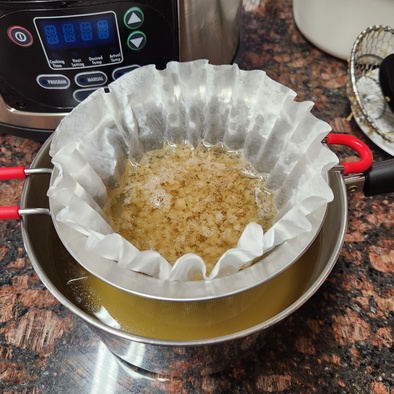
The large pieces of fat have almost completely melted leaving the clear yellow lard behind. Ensure all water is evaporated. I recommend straining your liquid fat into a large saucepan for this step. Keep the fat on the stove over low heat and stir frequently until no more bubbles form. Water when heated creates steam and forms bubbles. No more bubbles means no more water and you’re good to go.
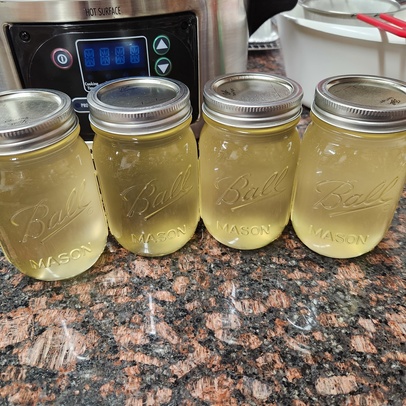
Let the fat cool and package. After cooling slightly I pack my tallow and lard in pint jars and keep them in the freezer for long term storage. It should solitify at room temperate into a mild smelling white solid. Rendered fat is shelf stable but to prevent the possibility of it going rancid, sacrificing a bit of freezer space isn't that bad. I also refrigerate opened containers with the lid on to prevent any off flavors absorbing in the fridge.
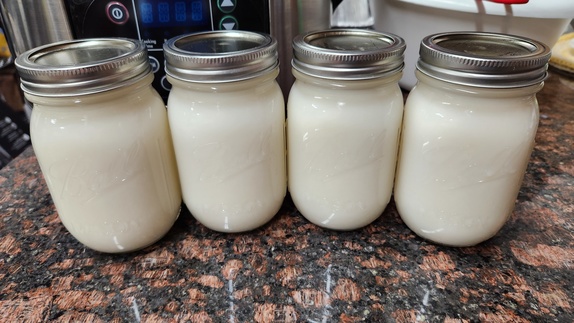
Enjoy not frying your food in motor oil!
